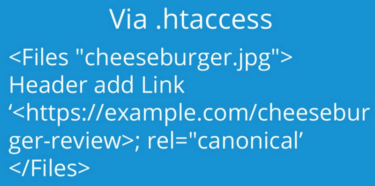April saw the first BrightonSEO event of 2017, and as per usual left us with plenty of food for thought between all StrategiQ attendees across a wide range of topics.
For me personally, one the biggest questions was raised by Sean Butcher of Blue Array during his excellent talk about use of canonical tags, specifically off the back of these two slides:
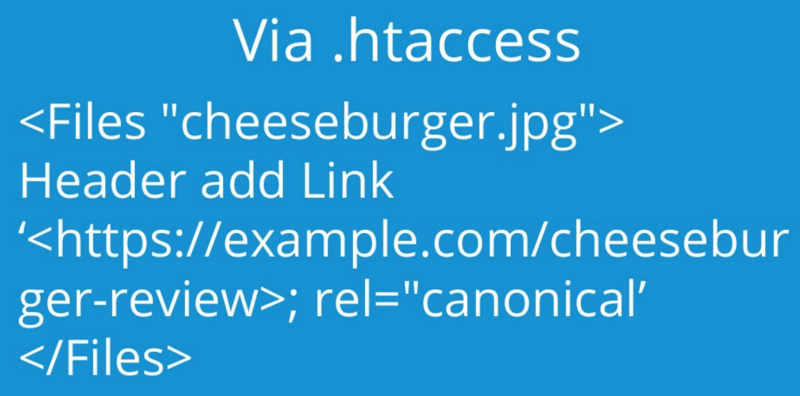
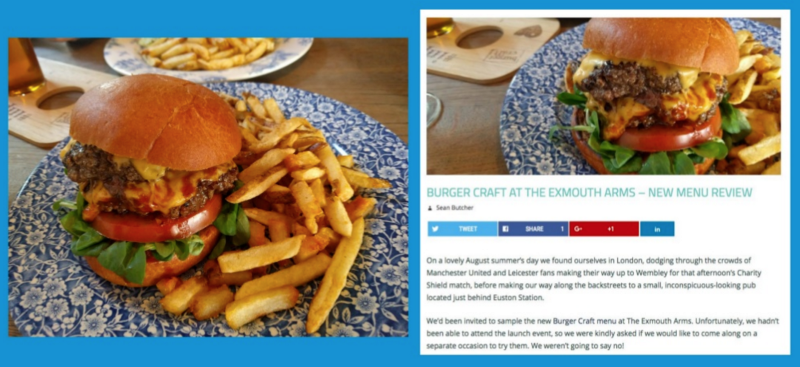
To explain, Sean suggested potentially experimenting with http header canonical tags from images back to the pages featuring them that could potentially pass back linking authority into said page and aid ranking competitiveness.
This is a sound theory and makes logical sense, however I couldn’t help but wonder how adding a canonical tag would impact indexation of the image, and pitched by question to him via Twitter after his talk:
https://twitter.com/callis1987/status/850353479335989248
https://twitter.com/callis1987/status/850355265383878656
Sean had run a number of tests to see how canonicals may behave based on certain criteria in his talk already, and my curiosity meant I couldn’t help buy run my own and see how adding a canonical tag to an image would impact SERPs.
In a throwback to how we were made to write our science class experiments in school, I’ve outlined the process below. Enjoy.
Hypothesis
If you were to add a canonical tag to an image to help improve the ranking of the hosting page, could this potentially also remove said image from Google’s image results and therefore have a negative impact on organic clicks if that image is ranking above the fold in certain SERPs?
Or would the image remain in Google’s Image results whilst also having a positive impact on the hosting page’s ranking?
Another theory is the canonical may not be honoured and have no impact what-so-ever, which was based on a comment made by John Mueller when researching for this experiment, however it’s well known in SEO circles that what Google says and what Google does can be two different things.
Method
On my personal website/blog, Callis Makes Films, I recently noticed I’ve randomly picked up some impressions in Search Console for “Bo Selecta David Blaine” and “Some men just want to watch the world burn” thanks to a blog post I wrote last year, so I’m going to experiment on this page by adding a canonical from the image file back to the original post.
I also emailed Sean during this experiment, and he suggested it may be worth experimenting the use of a canonical tag on a page’s leading image as well as a featured image as above. For this I decided to use another blog post I wrote in 2015 based on the tastes of other industry folk geared towards the heavier side of music.
The final test, based on another piece of feedback from Sean, was testing a canonical tag from one image to another. For this, I uploaded a second version of the David Blaine Bo Selecta image (with “david-blaine” and “bo-selecta” swapped around in the file name to differentiate it from the original image) and added it to a different blog post.
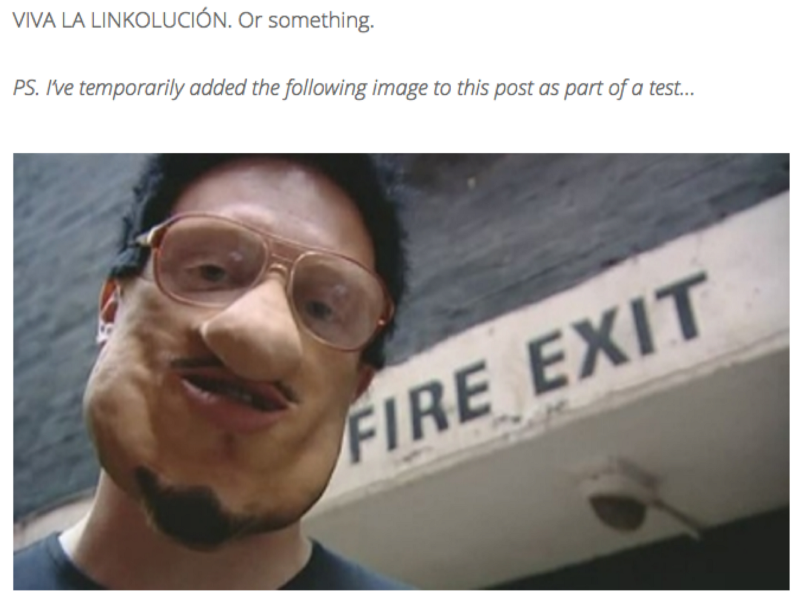
I am going to use keywords that can almost guarantee no search volume in Google, to hopefully limit external factors (such as competitiveness) impacting the results of this experiment.
For image results…
“bo selecta david blaine seo” – Currently ranking #1 in image results as of 10th April 2017

“blaine seo” – Currently ranking #60 in image results as of 10th April 2017

“black metal seomusic” – Currently ranking #1 in image results as of 27th April 2017
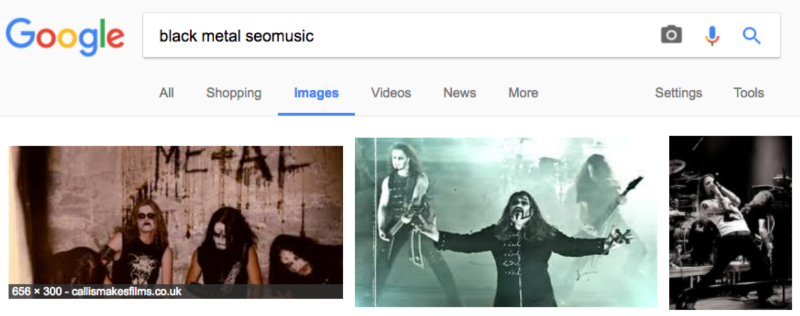
“black metal music seo” – Currently ranking #7 in image results as of 27th April 2017

For page rankings…
“seo bored” – Currently ranking #3 in search results as of 10th April 2017
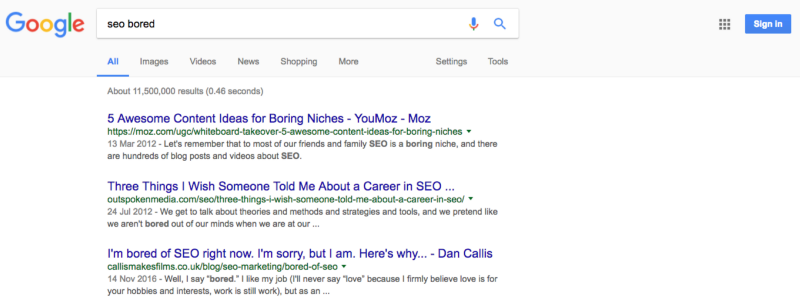
“seo world burn” – Currently ranking #11 in search results as of 10th April 2017

“seomusic” – Currently ranking #11 in search results as of 27th April 2017

“frontierer seo” – Currently ranking #2 in search results as of 27th April 2017
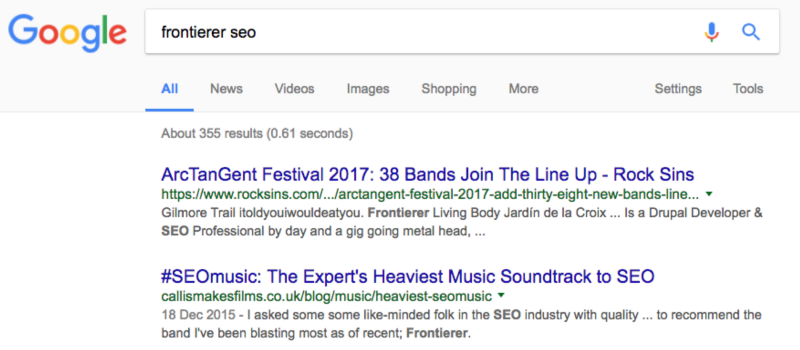
Caveats
As we are using keywords with minimal competition and no search volume, we need to account for what is movement and what is just fluctuation. Luckily, my colleague Simon recently created an hourly rank tracking tool to monitor exactly that, so we added the four keywords to the setup so we can reference them next to any movement we see in the SERPs.
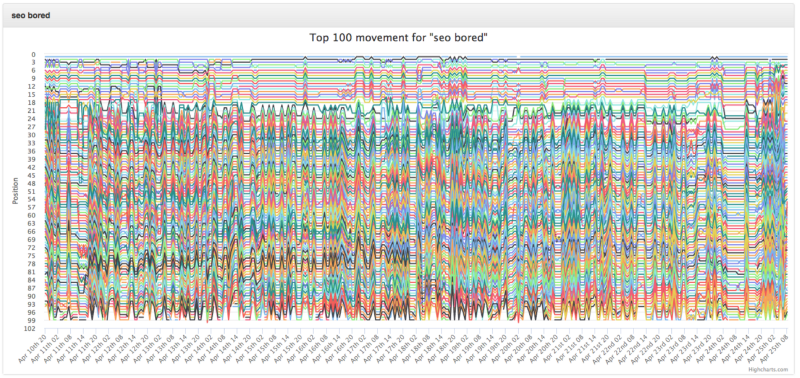
It’s also worth noting the sample size for this experiment is extremely limited by…
- using two images
- using two pages
- spanning one website
- monitoring eight keywords with limited-to-no search volume
In an ideal world, it would be great to try this experiment out in various capacities; more websites, more images, more pages, more competitive keywords with higher search volume, etc. This would give us a better benchmark to draw conclusions from, but at the same time I’m not willing to go and potentially break my clients’ websites in the name of my own curiosity.
Procedure
A http header canonical tag pointing to the page https://callismakesfilms.co.uk/blog/seo-marketing/bored-of-seo was added to the image https://callismakesfilms.co.uk/wp-content/uploads/2016/11/david-blaine-bo-selecta.jpg around 4pm on 13th April via the htaccess file using the Yoast All-In-One SEO plugin.

A quick check of the header response using Terminal showed the canonical as live.

After two weeks of running the first test on the David Blaine Bo Selecta image, I updated the the rule to a header canonical from the image https://callismakesfilms.co.uk/wp-content/uploads/2015/12/Black-Metal.jpg to the page https://callismakesfilms.co.uk/blog/music/heaviest-seomusic at 10.30am on 27th April.
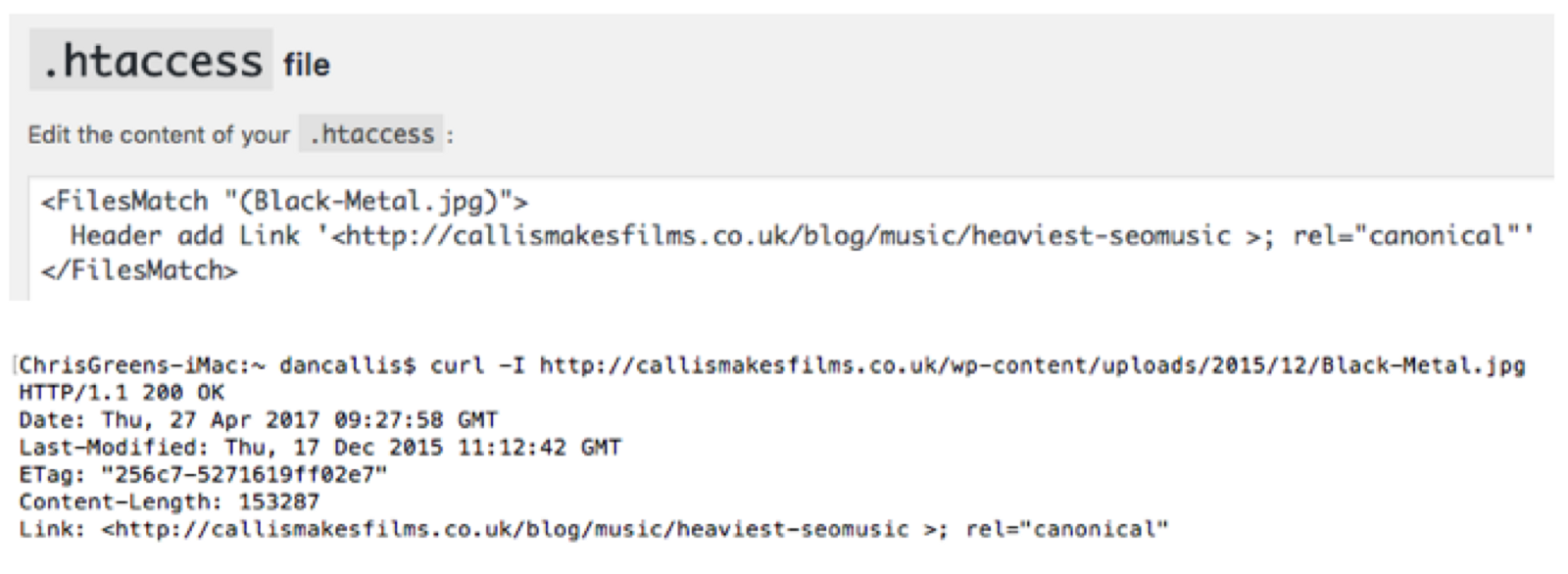
Finally, the canonical tag from the original David Blaine Bo Selecta image (https://callismakesfilms.co.uk/wp-content/uploads/2016/11/david-blaine-bo-selecta.jpg) was added pointing to the newly uploaded and renamed version (https://callismakesfilms.co.uk/wp-content/uploads/2017/03/bo-selecta-david-blaine.jpg) featured on another page at 12:05pm on 3rd May.
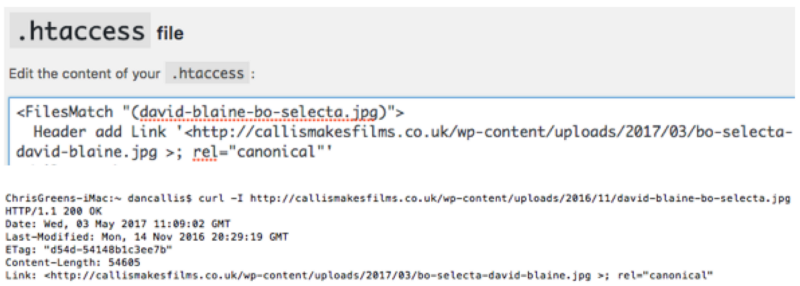
I also did a fetch of both the images and the blog posts in Search Console as soon as the canonical tags were added to hopefully speed up the process of Google finding and/or acknowledging the changes.

Results
Canonical from content image to page…
For image results, the David Blaine Bo Selecta picture was still accessible via Google for the two subject keywords as of Monday 24th April; 11 days after the change went live.
The image on my blog post was still ranking #1 for “bo selecta david blaine seo” and had a small improvement to #58 for “blaine seo” (which would most likely be normal fluctuation and not a result of this experiment).
As for the two keywords we monitored for page rankings, neither saw any major changes outside of normal fluctuation, as the hourly tracking demonstrates…
seo bored:
![]()
seo world burn:

Canonical from lead image to page…
For image results, the Black Metal picture was still accessible via Google for the two subject keywords as of Wednesday 3rd May; 6 days after the change went live.
The image remained #1 for “black metal seo music” and was now ranking #5 for “black metal music seo” — an improvement of two positions).
I do not believe the improvement was in relation to the canonical tag however because A) the canonical tag in theory should remove the image from search results and B) there had been a lot of fluctuation on all images on this SERP outside of the top three results (as shown by the below screenshot).
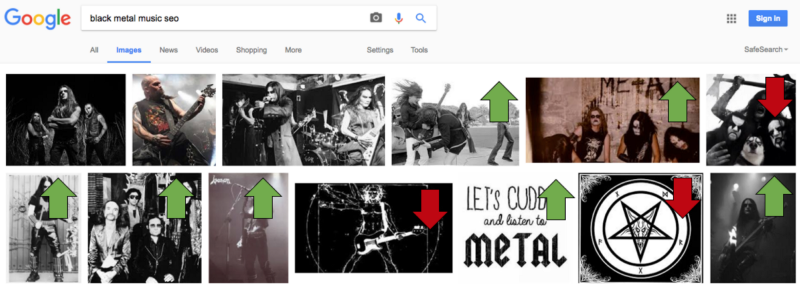
Page rankings for the keywords also saw no major changes in positioning, with “frontierer seo” remaining #2 and “seomusic” seeing a small decrease in ranking that isn’t outside of fluctuation patterns seen for other sites appearing around the same position for said keyword.
Canonical from image to image…
Despite Google crawling both relevant pages and images, the newer uploaded version of the image with the canonical pointing to it from the original image was never honoured, and the original remained in the SERPs for both keywords.
The original image was also still ranking #1 for “bo selecta david blaine seo” and had dropped to #67 for “blaine seo” (again, standard fluctuation the biggest culprit here).
For page rankings, again we saw nothing outside of the usual fluctuation to suggest the canonical had an impact on rankings.
Conclusion
The results of these experiments suggest Google did not honour the header canonical on the images as they remained indexed and present in search results. Therefore, the pages featuring the images received no ranking benefit from the image canonicals being in place.
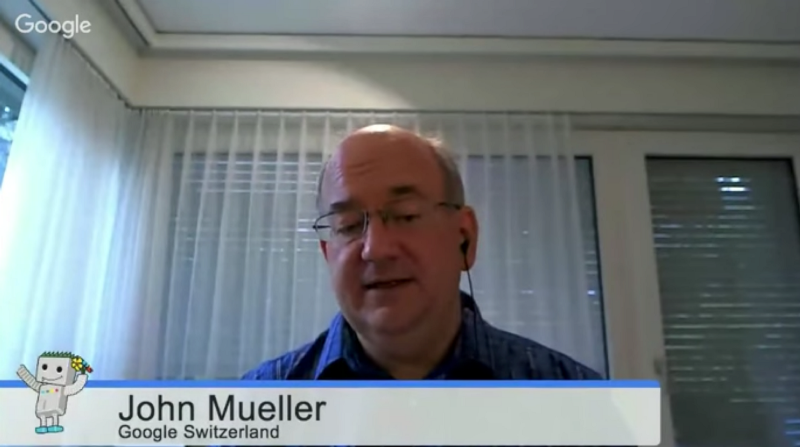
It would appear in these cases John Mueller’s advice linked above is correct; Google does not “use” canonical tags on images as a factor when crawling websites, and using them will result in no changes to indexing or rankings in search results.
However, as mentioned above, this test is limited. Although Google claims it does not honour image canonical tags, we’d love to see any evidence to support or challenge this post. Thanks.
